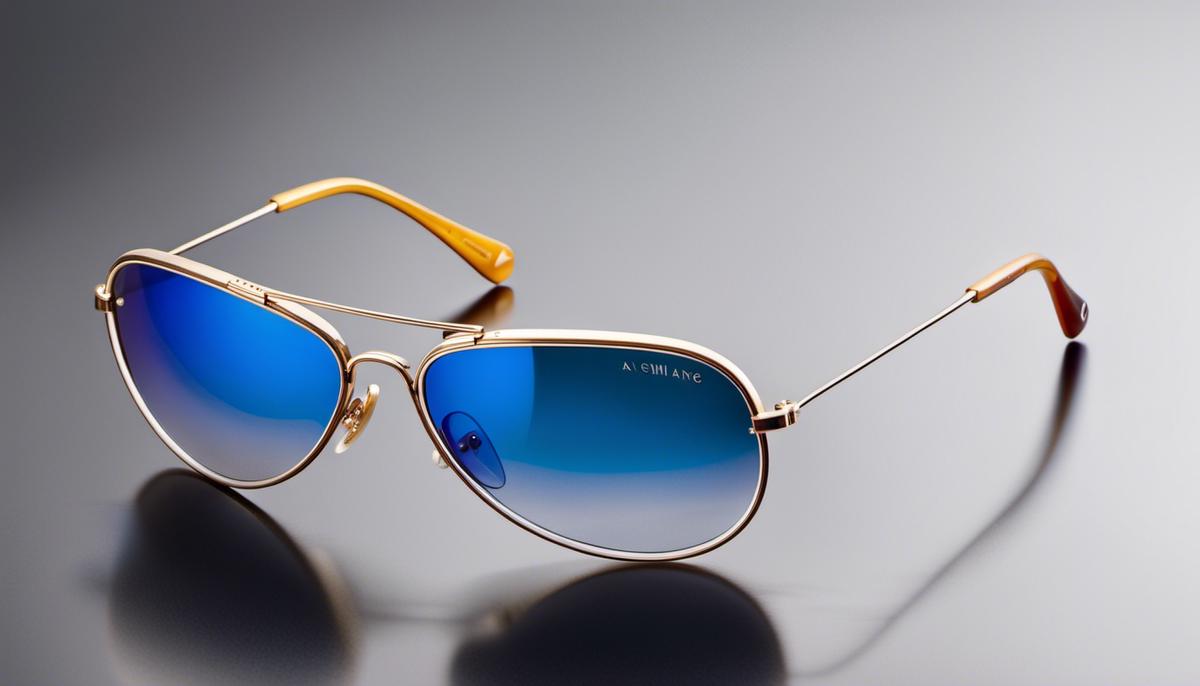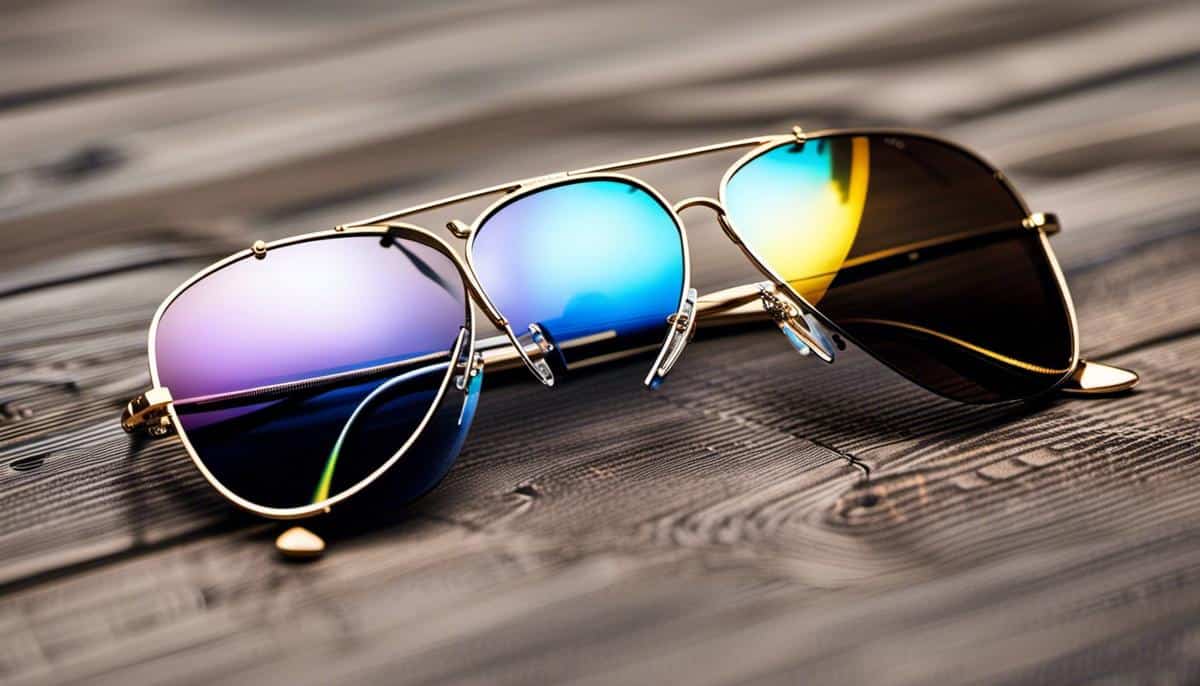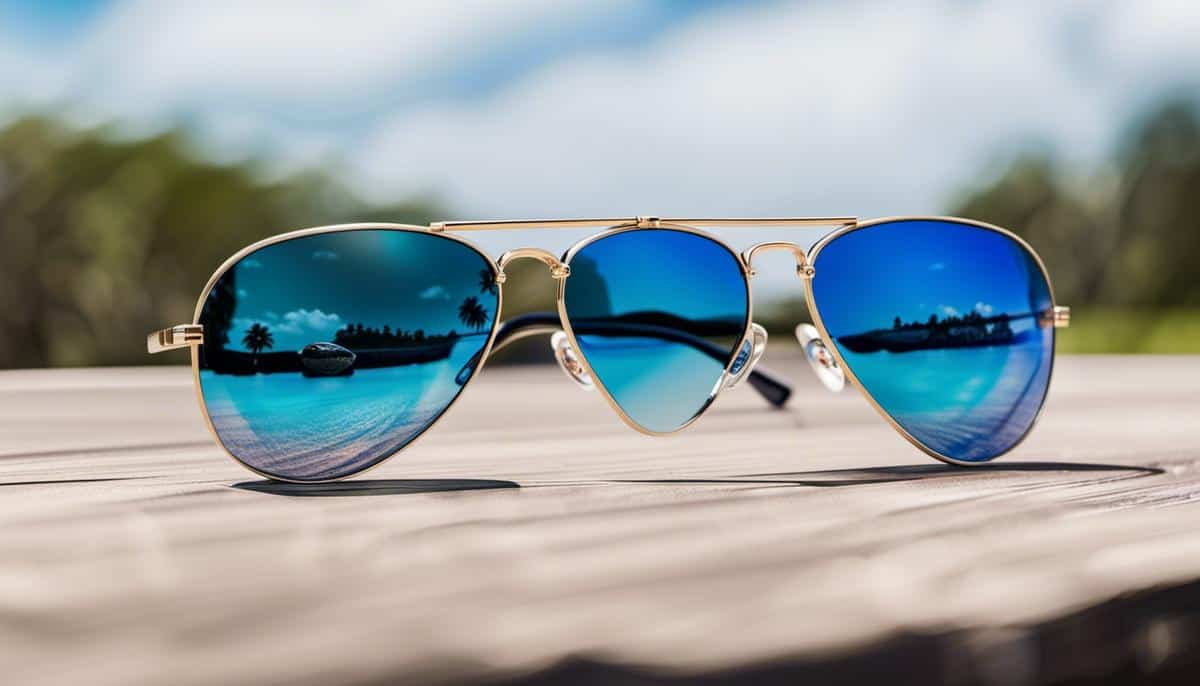Aviator sunglasses- the quintessential accessory that fuses style, history, and practicality in one sleek package. Often associated with the daredevil spirit of the military pilots they were initially designed for, these sunglasses have transcended their aviation roots to become a fashion staple across the world. This enduring appeal isn’t only rooted in their classic design, but also their versatility and functionality. However, wearing aviator sunglasses isn’t simply about throwing on a pair; it’s about understanding the rich history, selecting the perfect style, ensuring quality, and maintaining them with care. This comprehensive guide aims to shed light on all these aspects of aviator sunglasses.
History and Evolution of Aviator Sunglasses
Origins of Aviator Sunglasses
The aviator sunglasses, an iconic eyewear that has transcended through the years, were originally developed by Ray-Ban for pilots in 1936. The design was meant to protect the pilot’s eyes while flying, covering the entire field of vision, thereby shielding the pilots from the harsh sunlight up above. The material used was also substantial – the frame was made of metal and the lenses were initially green and glass-plastic hybrid. The teardrop design effectively shielded the eyes from sunlight from all directions, making it functional yet fashionable eye protection for pilots.
Aviator Sunglasses and the Aviation Industry
The relation of aviator sunglasses to the aviation industry is substantial and striking. The design was initially named ‘Anti-Glare’ and into ‘Aviator’ the following year, favored by pilots for its comprehensive eye protection. The shape and design of aviator sunglasses were indeed crafted with the aviation industry in mind, focusing on tackling the glaring sunlight and extreme temperatures faced by the pilots while airborne.
Evolution of Aviator Sunglasses
Over the decades, aviator sunglasses have undergone massive transitions and gained popularity among the general public. By the 1960s, they had evolved from specific aviation gear into universally beloved fashion accessories. Their size gradually became smaller, and they began to be made of less hazardous materials like plastic and lighter metals. By the 70s and 80s, the aviators became a statement fashion accessory, encouraging various brands to explore different styles, frames, colors, and lens treatments. Today, aviator sunglasses come in a plethora of designs with innovative elements like polarized lenses, mirrored lenses, and a variety of different colored lenses.
Aviator Sunglasses in Pop Culture
Aviator sunglasses have played an influential role in pop culture. The style exploded in popularity when they started to be donned by movie stars, musicians, and other cultural figures. From Tom Cruise in “Top Gun” to Robert De Niro in “Taxi Driver”, aviators have been versatile prop choices in various film genres. These sunglasses have also graced music stages on the faces of iconic rock stars like Freddie Mercury and Bob Dylan, contributing to their ubiquitous presence in the fashion world.
Modern Relevance of Aviator Sunglasses
In the world of eyewear, aviator sunglasses stand out due to their enduring popularity and timeless design. They hold a consistent spot in the fashion world, often showcased prominently by top brands, and are frequent favorites on the bestseller lists. Celebrities, fashion enthusiasts, and everyday people alike gravitate towards this classic style. The journey of aviator sunglasses, from their roots in practical pilot use to becoming a universally adored fashion item, displays a remarkable story of flexibility, widespread appeal, and enduring sophistication.

Aviator Sunglasses: Styles and Face Shape Guide
Understanding Aviator Sunglasses: An Overview
Aviator sunglasses, introduced by Bausch & Lomb, began their rise to fame in the 1930s and quickly cemented their place as a classic in the realm of sunglasses. Characterized by their distinct tear-drop lenses which are typically darker on top and transition to lighter shades at the bottom, these sunglasses were initially engineered for pilots to shield their eyes during flights. As time went on, the design evolved, and today’s aviators come in diverse styles ranging from the traditional wireframe design to modern versions featuring a plethora of shapes and hues.
Different Styles of Aviator Sunglasses
The most common aviator style is the traditional teardrop shape. This features a wireframe and dark, gradient lenses. The classic teardrop aviators typically have a double or triple bridge, and offer a vintage, timeless look.
Square aviators, on the other hand, have a more modern appeal. They balance the classic style with a contemporary touch, substituting the teardrop lenses for a squarer shape, making them a perfect choice for people who want a more edgy or fashionable style.
Navigator sunglasses are a variant of the aviators. In contrast to the wider teardrop or square shapes, navigators are characterized by their narrower, rectangular lenses. These types of aviators offer a streamlined look and are ideal for individuals with smaller face shapes or those who prefer a more modest style.
Finding Your Perfect Aviator Sunglasses Style Based on Your Face Shape
Picking out the perfect pair of aviator sunglasses isn’t just about style. Your facial shape also greatly influences which type of aviators will best accentuate your best features while ensuring a balanced look.
Those with round faces, for example, can benefit from the traditional teardrop aviator, whose wider lenses lend an elongated effect to the face. The gentle point at the bottom of the teardrop shape can also introduce stronger lines to soften facial characteristics.
For oval face shapes, square aviators are often the perfect complement. They provide a nice counterpoint, emphasizing your face’s natural symmetry. Furthermore, the edgy design of square aviators incorporates angular lines, enhancing your face’s rounded attributes.
Have a rectangular or long face? Consider opting for navigator style sunglasses. The broad shape of these aviators counterbalances the length of your face, creating the illusion of breadth. These frames are typically wider, harmonizing beautifully with the vertical elements of a longer face.
Choosing the right style of aviators isn’t just a fashion statement – it’s a means of showcasing your best features. So, whether you go for a classic teardrop style, a contemporary square design, or a bold navigator look, ensure your chosen aviators are comfortable and echo your unique personal style.

Selecting Quality Aviator Sunglasses
Selecting the Optimal Lens Material for Your Aviator Sunglasses
When it comes to choosing superior quality aviator sunglasses, the lens material holds profound significance. The three main lens materials you’ll come across are plastic, glass, and polycarbonate. Plastic lenses, usually crafted from acrylic, are valued for being lightweight and cost-effective, although they lack optimal clarity and are inclined to scratches. Glass lenses, though heavier, boast unmatched clarity and are highly resistant to scratches. However, they’re prone to shatter upon impact. Polycarbonate lenses, on the other hand, provide a happy medium. They are valued for their excellent impact resistance and decent clarity, all while being much lighter compared to glass lenses.
Importance of UV Protection in Aviator Sunglasses
Ensuring your aviator sunglasses provide UV protection is essential. Long-term exposure to UV rays can lead to serious eye conditions, including cataracts and other eye diseases. Look for glasses that block 99% to 100% of both UVA and UVB rays. Larger frames like aviators are ideal as they provide more peripheral protection. Sunglasses labeled as “UV400” block all light rays up to 400 nanometers, which covers all UVA and UVB rays.
Choosing a Durable Frame Material for Aviator Sunglasses
The frame material impacts the durability, comfort, and appearance of your aviator sunglasses. Metal frames, often made from stainless steel or aluminum, are usually more durable and hypoallergenic. They come in various colors and finishes, and maintain a certain level of flex without losing their shape. On the other hand, plastic frames are lightweight, available in a array of colors, and generally less expensive than metal frames, but they may not be as durable or sturdy. Some high-end brands offer titanium frames, which are extremely durable, light, and hypoallergenic.
Considering Brand Reputation when Buying Aviator Sunglasses
Finally, the brand matters as it often reflects the quality of the sunglasses. Renowned brands like Ray-Ban, Oakley, and American Optical, are known for their high-quality aviator sunglasses that offer excellent durability, UV protection, and stylish designs. However, there are also lesser known brands that offer high quality aviator sunglasses. Closely read the product details, and if possible, check out customer reviews to get an understanding of the product’s quality.
Choosing the right aviator sunglasses involves more than just picking out a style that suits you. Attention should also be given to aspects such as the lens material, the amount of UV protection they provide, the material used to make the frames, and the credibility of the brand. When these factors are considered, you are assured of quality sunglasses that are durable, functional, and stylish.

Care and Maintenance of Aviator Sunglasses
Caring for Your Sunglasses
Legendary in both their aesthetics and performance, aviator sunglasses necessitate careful upkeep to sustain their shine and secure lens clarity. Keep them clean by rinsing with lukewarm water; hot water could potentially harm the lens coating. Subsequently, lightly apply dish soap to your fingers and pass them over every area of the sunglasses – the lenses, frames, and even the arms. Rinse comprehensively to ensure all soap is removed, then pat dry with a lint-free cloth, preferably microfiber. By cleaning regularly, you deter the accumulation of dirt and oils that can potentially scrape the lenses or inflict damage on the frame, thus, preserving their longevity.
Storage Advice
Proper storage of aviator sunglasses is crucial for maintaining their shape and preventing damage. Always store your sunglasses in a sturdy case when not in use. This will protect your eyewear from scratches, accidental crushing, and direct sunlight which can fade the frames and weaken the lenses over time. If a sunglass case is not available, place your sunglasses on a flat surface with the lenses facing upwards to avoid scratching. Avoid leaving them in hot places, like the dashboard of a car, as heat can warp the frames and damage the lens coating.
Handling Your Sunglasses
Handling your sunglasses correctly can prolong their lifespan. When putting on or removing your sunglasses, use both hands to prevent misalignment or warpage of the frames. Avoid wearing your sunglasses on top of your head. This stretches the frames and can cause them to become loose or misshapen over time.
Minor Repairs and Maintenance
Minor repairs like tightening screws or replacing nose pads can be done at home with a small eyeglass repair kit. Be careful not to overtighten screws as it can lead to stripped threads or frame cracks. If your lenses are scratched, a lens repair kit containing a filler substance can be used to minimize scratch visibility. However, deep scratches, particularly those in the line of sight, may require lens replacement by a professional.
Regular Check-ups
Just like any prized possession, regular check-ups are necessary to ensure your aviator sunglasses are in perfect condition. Have a professional assess them annually or whenever you notice changes in vision clarity or frame integrity. This can catch any issues early and keep your sunglasses looking good and functioning effectively.
Replacement Parts
Over time, components of your aviator sunglasses may need to be replaced due to wear and tear. Many companies provide replacement parts for their sunglasses, allowing lenses, nose pads, and screws to be easily replaced. Explore this option to extend the lifespan of your sunglasses, instead of replacing the entire piece when only a single component has worn out.
Remember
Aviator sunglasses are not just fashion accessories but also a great tool for eye protection. It is essential that they are taken care of properly to ensure they are effective and remain stylish over the years.

Aviator sunglasses have successfully maintained their relevance and appeal over decades, continually reinventing themselves to suit changing trends and fashion sensibilities. As you step forward into a world enlightened with knowledge about their history, evolution, and varied styles, you are now prepared to make an informed selection of your perfect pair. With a keen understanding of their quality markers and maintenance, you’re armed to ensure your chosen sunglasses last a lifetime, a testament to your style, and an homage to the formidable history they represent. As you don your aviators, remember, you are indeed wearing a piece of history that adds an undeniable edge to your style narrative.
Experience expert-level content with Writio – an AI-powered writer for publishers and blogs. This article was crafted by Writio’s genius.

